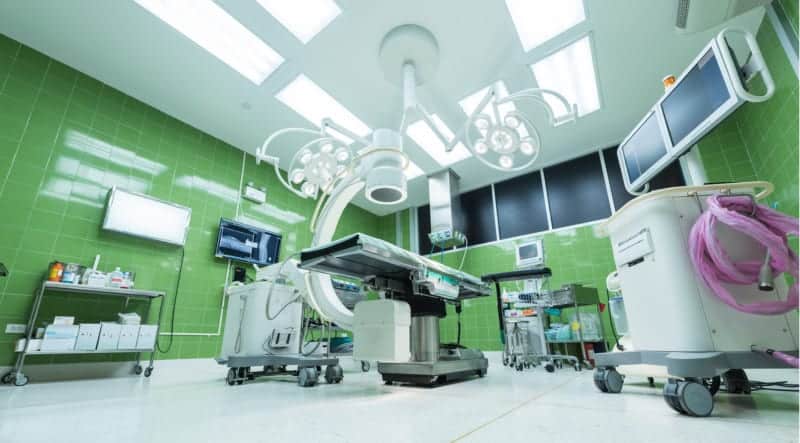
Proper containment is critical to Infection Control Risk Assessment (ICRA) and ensuring safety on construction sites within healthcare facilities. Using ICRA barriers, such as temporary wall systems, is essential for establishing effective containment and maintaining safety standards. Every crew member must thoroughly understand ICRA to confidently implement and maintain these protective measures.
Understanding ICRA Barriers in Healthcare Construction
Construction crews working in healthcare settings need to:
- Understand what ICRA is and its significance
- Have a thorough knowledge of infection control and best practices
- Know the difference between hospital construction and regular commercial construction
- Be aware of hazards unique to healthcare construction
- Know the risk level of a work site or activity prior to beginning the project
- Develop a comprehensive ICRA plan
- Implement ICRA best practices, including the use of barriers, negative air pressure, and disinfection.
With these demands, it’s crucial to have a temporary wall system that meets ICRA standards, deploys quickly, and provides durable, cleanable, and aesthetically pleasing containment. STARC’s temporary wall systems are designed specifically for healthcare renovation settings, offering a safe, reusable, and airtight solution that isolates the impacted environment. It’s a preferred choice for contractors and healthcare facilities nationwide.
How Temporary Walls Ensure Compliance in Healthcare Renovations
The CDC mandates healthcare facilities conduct an ICRA before starting any renovation, construction, or repair project. The ICRA Class IV designation requires barriers that prevent dust and pathogens from entering patient areas while complying with local fire codes.
Thousands of patients suffer from healthcare-associated infections (HAIs) every year due to dust stirred up during renovations. Using appropriate ICRA barriers is essential to mitigate this risk. Hospital construction differs from other projects due to heightened risks for patients and staff, making infection control critical.
Why ICRA-Compliant Temporary Walls Matter in Hospital Settings
Hospitals are complex buildings, housing various services like diagnostic labs, emergency rooms, surgery centers, and inpatient care units. Each has unique containment needs governed by regulations and codes. Owners and contractors must ensure that teams are properly trained and use ICRA-compliant temporary walls to protect patients and staff.
Exceeding ICRA Class IV/V With Temporary Walls
STARC temporary wall system offers containment that exceeds ICRA Class IV/V requirements. It’s durable, easy to clean, reusable, and can create airtight barriers, making it an ideal solution for healthcare construction.
“STARC’s temporary construction walls help us maintain ICRA Class IV compliance while enabling fast mobilization and demobilization,” said Chip Bowman, Executive Director of Development & Finance at W.E. Bowman, a commercial construction company. “The walls are critical for infection control, keeping dust out of patient rooms and common areas.” (Read Full Case Study)
STARC panels are engineered specifically for ICRA-compliant barriers in healthcare construction projects, helping maintain safer worksites and minimizing risks for patients, staff, and the public.
Written by Gearhart and Associates, LLC. for STARC Systems, Inc. Gearhart and Associates are industry experts in Infection Control Risk Assessment (ICRA) training, Infection Control and Prevention Strategies, and Facilities Risk Management.
